11 November 1956
by Tom Hildreth
In the late 1940s, fighter aircraft designers faced the problem of reliably and safely achieving flight beyond the speed of sound. There were many approaches to this vexing aerodynamic problem, which involved the entire airframe design. In the United States, a wide-variety of wing plan-forms appeared as part of the solution. Lockheed would succeed with the small, extremely thin wing of the F-104 Starfighter, while North American would attain the Mach 1 goal with the extreme wing-sweep of the F-100 Super Sabre. Convair would embrace the 60 ° delta wing to obtain supersonic flight.
History would show that Convair was right to believe so strongly in the delta wing. By 1945, NACA studies had pointed to the delta's superiority at very high speeds, and German research into the delta wing during WWII, led by Dr. Alexander M. Lippisch, supported this view. Convair produced two operational supersonic military fighters (F-102 and F-106) in the 1950s, and reached the zenith of US delta wing design when the B-58 Hustler bomber prototype (55-0660) flew for the first time on November 11, 1956. Produced under weapons system WS-102A, only 116 examples of the Convair Model 4 Hustler left the production line at Ft. Worth. Thirty of the early machines were developmental models, used for flight trials and systems development. As this represented fully 26% of the total airframes, following the end of the flight test and development phase, 20 of the trials aircraft were brought up to full service standard for assignment to the Air Force's two operational B-58 wings.
Aircraft #2 through #9 were designated YB/RB-58, and the following 21 aircraft were designated The B-58A first flew in September, 1959. On 15 October 1959, this aircraft flew 1,680 miles with one subsonic air-refueling, maintaining a speed in excess of Mach 2 for over
an hour. The B-58A's gross weight at takeoff was 163,000 lb., but once airborne, the Hustler could take on additional fuel that would bring the gross weight to 176,890 lb.
Cruise speed of 579 MPH was similar to any other large jet of the day, but with the four General Electric J-79-5 turbojets in max. afterburner producing a combined total of
62,400 lb. thrust, top speed of 1,385 MPH was attained. The B-58A had a service ceiling of 63,000 ft., and with a maximum climb rate of 38,050 ft./min., the aircraft
got to its cruise altitude quickly. The 43d Bomb Wing at Carswell was selected as the first B-58A operational organization, being activated on 15 March 1960. This establishment, with the 63d, 64th and 65th Bomb Squadrons assigned, moved to Little Rock AFB, AR., on 1 September 1964. The second B-58 operational organization was the 305th Bomb Wing, which was assigned to Bunker Hill AFB, IN., on 1 January 1959. This organization continued to operate B-47 bombers until the B/TB-58As began arriving in 1961. The flying units under this wing were the 364th, 365th, 366th and 422d Bomb Squadrons.
The B-58's service career in the Air Force was brief, only ten years. The Hustler was in a class of its own, essentially an experimental platform that occupied an operational position. By the 1962-1963 time frame, with the steep part of the learning curve behind them, the two B-58 wings proved that the Hustler had become a successful element of American nuclear deterrence. During the 1960-1970 reign of the Hustler, the aircraft set an incredible number of performance records. The big delta has never been equaled in the military realm; the legacy of the B-58 is that of the most potent high altitude bomber ever developed. Delta wing evolution would continue after the retirement of the B-58. The F-16 Fighting Falcon of today is considered to posses a "cropped" delta wing. When applied to passenger travel, the delta plan-form would result in the world's only supersonic airliner, and in the Concorde, the world saw what was quite possibly the most beautiful aircraft ever built. |
|
Click each photo below for large version |
|||||||
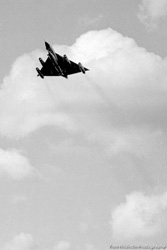 Hustler on final at Westover AFB 6 July 1964. |
||||||
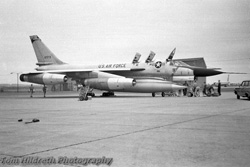 B-58A 61-2073 of the 305th BW at Westover AFB, MA 8 May 1965 |
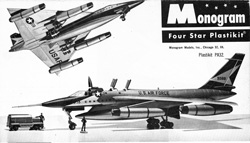 Vintage kit instructions for the second XB-58, 55-0661. |
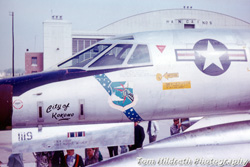 "City of Kokomo" (60-0119) of the 305th BW at Bunker Hill AFB, IN at Westover AFB, MA on 16 May 1964. |
|
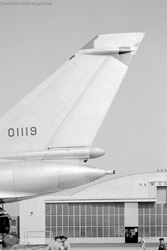 Defensive armament of the Hustler consisted of a radar-directed M61 cannon in this sleek mount. |
||
| HOME |
| EMAIL Tom Hildreth |